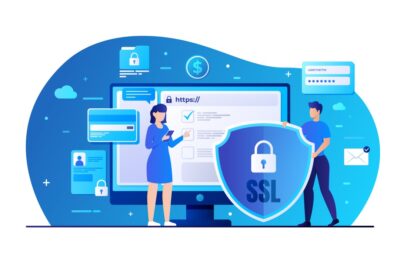Like any other industry, ecommerce FAQs also aim to answer commonly asked questions by a wide range of users. If you’re new to ecommerce, you likely have a lot of questions. Even if you’re an experienced ecommerce business owner, you may still have some lingering questions or concerns. That’s where ecommerce FAQs come in. By answering some of the most common questions about ecommerce, you can gain a better understanding of what it takes to run a successful online business.

One of the most common questions people have about ecommerce is how to get started. There are a lot of different factors to consider, including choosing a platform, designing your website, and setting up payment processing. Fortunately, there are many resources available to help you navigate the process, including ecommerce FAQs like this one.
Another common question is how to attract customers to your ecommerce site. There are many different strategies you can use, from social media marketing to search engine optimization (SEO) to email marketing. Understanding the basics of ecommerce marketing can help you drive traffic to your site and increase your sales. So, whether you’re just starting out or looking to improve your existing ecommerce business, ecommerce FAQs can be a valuable resource.
Related Posts:
- FAQs Ecommerce | Ecommerce Frequently Asked Questions
- 15 Most Asked eCommerce FAQs Answered – Dokan
- 10 FAQs on eCommerce – Estrrado
Ecommerce FAQs about Getting Started
Starting an e-commerce business can seem overwhelming. However, with the right platform and tools, setting up an online store can be a straightforward process. This section includes answers to e-commerce FAQs addressing the basics of choosing a platform, setting up an online store, and selecting payment gateways.

1. Choosing a Platform
When it comes to choosing an ecommerce platform, there are many options available. Some of the most popular platforms include Shopify, WooCommerce, and Magento. Each platform has its own strengths and weaknesses, so it’s important to do your research and choose the one that best fits your needs.
Consider factors such as ease of use, customization options, pricing, and customer support when making your decision. You may also want to think about the size of your business and your long-term goals when selecting a platform.
2. Setting Up an Online Store
Once you’ve chosen a platform, the next step is to set up your online store. This typically involves selecting a theme or design for your site, adding products, and configuring your settings.
Make sure to optimize your site for search engines and provide clear product descriptions and images to help customers make informed purchasing decisions. You may also want to consider offering promotions or discounts to attract customers and increase sales.
3. Payment Gateways
Payment gateways are an essential part of any ecommerce store. These services allow you to securely process payments from customers and transfer funds to your bank account.
Popular payment gateways include PayPal, Stripe, and Authorize.net. When selecting a payment gateway, make sure to consider factors such as fees, security, and ease of use.
Related Posts:
Ecommerce FAQs about Product Management

Managing your products is a crucial aspect of running an ecommerce store. With the right tools and strategies, you can streamline your product management process and ensure that your customers have a great shopping experience. Here are some commonly asked questions related to product management.
4. Adding Products
Adding products to your ecommerce store is a straightforward process. Most ecommerce platforms allow you to create product listings that include details such as product name, description, price, and images. You can also add additional information such as product dimensions, weight, and shipping options.
When adding products, it’s important to ensure that your listings are accurate and up-to-date. Make sure that your product descriptions are clear and detailed, and that your images accurately represent your products. This will help to reduce the likelihood of returns and increase customer satisfaction.
5. Inventory Tracking
Managing your inventory is an essential part of product management. You need to know how much stock you have on hand at all times so that you can avoid overselling and stockouts. Most ecommerce platforms and the advent of AI in ecommerce offer inventory tracking tools that allow you to keep track of your stock levels and receive notifications when inventory is running low.

When setting up your inventory tracking system, it’s important to determine the right level of safety stock for each of your products. Safety stock is the amount of inventory that you keep on hand to ensure that you don’t run out of stock before your next shipment arrives. By setting the right level of safety stock, you can avoid stockouts and keep your customers happy.
6. Product Variants
If you sell products with different variations, such as size or color, you’ll need to set up product variants. Most ecommerce platforms allow you to create product variants that are linked to the main product listing. This allows customers to choose the specific variation that they want to purchase.
When setting up product variants, it’s important to ensure that your product listings are clear and easy to understand. Make sure that each variant is clearly labeled and that customers can easily select the variation that they want. You should also ensure that your inventory tracking system is set up to track each individual variant so that you can avoid overselling.
Ecommerce FAQs about Order Processing
When it comes to order processing, there are a few things you should keep in mind to ensure a smooth experience. Here are some frequently asked questions and answers to help guide you through the process.

7. Order Fulfillment
Once you place an order, the ecommerce team will work on fulfilling it as quickly as possible. Their goal is to get your order to you in a timely manner while also ensuring that it arrives in perfect condition. If there are any issues with your order, the team will reach out to you to let you know and work to resolve the issue.
8. Shipping Options
You should offer a variety of shipping options to meet customer needs. You can choose from standard shipping, expedited shipping, or even overnight shipping for customers who need their order in a hurry. The cost of shipping will depend on the size and weight of the order, as well as the shipping method you choose.
9. Returns and Refunds
If, for any reason, you as a client are not satisfied with your order, ecommerce businesses offer a hassle-free return process. Simply reach out to the customer service team to initiate the return process. Once the shop receives your returned item, they will issue a refund to your original form of payment. Please note that some items may be subject to a restocking fee.
The goal of ecommerce businesses is to strive to make the order processing experience as easy and stress-free as possible. If you have any questions or concerns, often don’t hesitate to reach out to the customer service team for assistance.
Ecommerce FAQs about Customer Service
When it comes to eCommerce, customer service is a crucial aspect of ensuring customer satisfaction and loyalty. Here are some important things to know about customer service in eCommerce.

10. Support Channels
As an eCommerce business, it’s essential to provide your customers with multiple support channels to address their concerns and questions. Some commonly used support channels include email, phone, live chat, and social media. It’s important to ensure that your support team is trained to handle all types of queries and provide prompt and accurate responses.
11. Customer Feedback
Customer feedback is an excellent way to improve your eCommerce business and provide better customer service. You can collect feedback through various channels, such as surveys, reviews, and social media. It’s important to listen to your customers and take their feedback seriously to make necessary improvements.
12. Issue Resolution
In ecommerce, issues are bound to arise, and it’s crucial to have a well-defined process for issue resolution. Ensure that your support team is equipped to handle all types of issues, and you have a system in place to escalate issues that require further attention. It’s also essential to keep your customers informed about the status of their issues and provide timely updates.
Ecommerce FAQs about Marketing and SEO
To increase traffic and sales, you need to have a solid marketing and SEO strategy in place. Here are some tips to get you started:

13. SEO Best Practices
- Conduct keyword research to identify the most relevant and high-traffic keywords for your products and services.
- Optimize your website’s meta tags, including title tags, meta descriptions, and header tags, using your target keywords.
- Ensure your website is mobile-friendly and has fast loading times.
- Build high-quality backlinks from reputable sources to improve your website’s authority and search engine ranking.
14. Content Marketing
- Create high-quality, informative, and engaging content that aligns with your target audience’s interests and needs.
- Use social media platforms to promote your content and engage with your audience.
- Leverage user-generated content, such as customer reviews and testimonials, to build trust and credibility with potential customers.
15. Email Campaigns
- Build a targeted email list of subscribers who have opted-in to receive your marketing emails.
- Use personalized and relevant content in your emails to increase open and click-through rates.
- Segment your email list based on user behavior and preferences to deliver more targeted and effective campaigns.
Data Security and Privacy
When it comes to ecommerce, data security and privacy are top concerns for both customers and businesses. As an eCommerce business owner, it is your responsibility to ensure that your customers’ data is protected and their privacy is respected. Here are some key considerations to keep in mind:

16. Protecting Customer Data
Protecting customer data is essential to maintaining customer trust. You should take steps to ensure that customer data is secure, such as using SSL encryption, implementing strong passwords, and regularly updating software. It’s also important to provide customers with clear and concise privacy policies that outline how their data will be used and protected.
17. Compliance Standards
As an ecommerce business owner, you need to comply with various data protection and privacy regulations, such as the General Data Protection Regulation (GDPR) and the California Consumer Privacy Act (CCPA). Make sure you are familiar with the regulations that apply to your business and take steps to ensure compliance.
18. Data Breach Protocols
Despite your best efforts, data breaches can still occur. It’s important to have a clear plan in place for dealing with data breaches, including notifying affected customers and authorities. You should also take steps to prevent future breaches, such as conducting regular security audits and implementing multi-factor authentication.
Ecommerce FAQs about Analytics and Reporting
As an ecommerce business owner, it’s important to track and analyze your website’s performance to make informed decisions. Analytics and reporting tools can help you gain insights into your sales metrics, website analytics, and customer behavior.

19. Sales Metrics
Tracking your sales metrics can help you understand how your business is performing and identify areas for improvement. Some important metrics to track include:
- Conversion rate: the percentage of visitors who make a purchase on your website
- Average order value: the average amount of money customers spend per order
- Customer lifetime value: the total amount of money a customer is expected to spend on your website over their lifetime
By monitoring these metrics, you can identify which products are selling well, which marketing campaigns are driving the most sales, and where you can improve your website’s user experience to increase conversions.
2o. Website Analytics
Website analytics tools can help you track visitor behavior on your website, including:
- Traffic sources: where your website visitors are coming from (e.g. search engines, social media, email marketing)
- Bounce rate: the percentage of visitors who leave your website after viewing only one page
- Time on site: how long visitors spend on your website
- Click-through rate: the percentage of visitors who click on a specific link on your website
Analyzing these metrics can help you identify which marketing channels drive the most traffic to your website, which pages are most popular, and where visitors drop off. This information can help you optimize your website to improve user experience and increase conversions.
21. Customer Insights

Understanding your customers’ behavior can help you tailor your marketing campaigns and improve your website’s user experience. Some important customer insights to track include:
- Demographics: age, gender, location, etc.
- Purchase history: what products customers have purchased in the past
- Customer feedback: reviews, surveys, and other feedback from customers
Analyzing this data can help you increase your ROI by examining which customer segments are most profitable, which products are most popular among specific demographics, and where you can improve your website’s user experience to better serve your customers.
Paying attention to all the above questions will help you build a good ecommerce business and maximize your ROI. Emerging technologies are also making the process of building an ecommerce business easier. Hence, ecommerce business owners should consider incorporating the provided insights. There is also the option of engaging the services of a digital marketing agency for better results.


